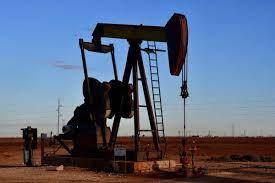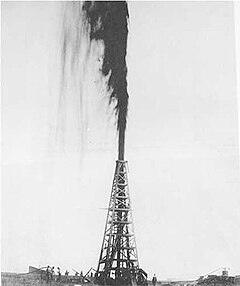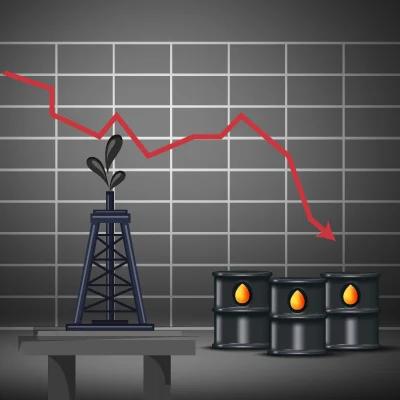

THE HISTORY OF OIL AND GAS IN TEXAS


CONTENT
Significance of Oil and Gas in Texas
Rise of Texas Oil Towns
Oil Crisis and Economic Challenges
Fracking and the Shale Revolution
Future of Oil and Gas in Texas

SIGNIFICANCE OF OIL AND GAS IN TEXAS
Spindletop Discovery (1901):
The Lucas No. 1 well, known as Spindletop, erupted on January 10, 1901, marking the onset of Texas' contemporary era. This event shifted the state from an agrarian society to a major player in the global petroleum and industrial landscape.


Spindletop Boom
Early Texas Economy:
Timber, Agriculture, Livestock
Insignificant Oil Impact: Late 19th-early 20th century
Spindletop GameChanger: Discovery on Jan 10, 1901
Early Efforts to Discover Oil
Spindletop Hill Indicators:
Sulfur springs, gas seepages
Gladys City Oil Co.: Founded in 1892
Patillo Higgins' Vision: Salt dome drilling for oil
Lucas' Discovery: Oil found at 1,139 feet (1901)
The Spindletop Discovery:
Salt Dome Location:
Beaumont, Texas
Massive Oil Spew: 100,000 barrels for 9 days
Chevron Formation:
Texaco and Gulf Oil merger
Collaboration and Discovery
Patillo Higgins and Captain
Lucas: Salt dome collaboration
Financial Support: Guffey, Galey back Lucas
Introduction of Specialists: Hamill brothers from Corsicana
Spindletop's Role in US Oil Boom:
Daniel Yergin's View: Launches US oil boom
Oil Accessibility: Lighting and lubrication shift
Historical Use of Oil:
Spanish Crude Use: Ship caulking, boot waterproofing (1543)
Native American Medicine: Crude oil applications
Pre-1800 Dwelling
Lubrication: Oil leaks
Texas Oil Pioneers: Sour Lake (1847), Corsicana (1896)
The Historic Oil Strike
Spindletop's Economic Impact
Lucas' Success: Oil at 1,139 feet (Jan 10, 1901)
Lucas Geyser and
Gusher: Released
100,000 barrels daily
Gusher Duration: 9 days
Lamar University
Data: 836,000 barrels in 9 days
1901 US Oil Supply:
40% from Spindletop

RISE OF TEXAS OIL TOWNS
Texas has a rich history of oil production, reaching its peak in 1972 and experiencing fluctuations since. In 2019, the state produced 1.85 billion barrels, significantly impacting the overall U.S. output. Major cities like Houston, Austin, Dallas, San Antonio, and Midland serve as oil and gas investment hubs, with Houston being the energy epicenters housing major companies like BP, ConocoPhillips, and Shell. While the COVID-19 pandemic affected the Texas oil sector, analysts foresee potential revival, particularly in the Permian Basin. Texas' enduring oil legacy has shaped its cities and solidified its position as a crucial player in the nation's energy landscape.


OIL CRISIS AND ECONOMIC CHALLENGES
The US and the West faced a significant energy crisis in 1973. Arab OPEC countries tripled oil prices and banned shipments to the US, Japan, and Europe's west in retaliation to Western backing for Israel following the Yom Kippur War and fears over the weakening US currency. This greatly affected the US oil and gas sector.

The Iranian Revolution caused major disruption to the oil sector, resulting in a substantial loss of production. This crisis also affected US oil and gas supply.
 1973 Oil Crisis
1979 Oil Crisis
1973 Oil Crisis
1979 Oil Crisis


FRACKING AND THE SHALE REVOLUTION
Fracking, short for hydraulic fracturing, is a method of extracting natural gas and oil from deep underground shale formations. It involves injecting high-pressure water, sand, and chemicals into the rock, fracturing it to release the trapped resources. The shale revolution, propelled by fracking technology, has transformed global energy markets, leading to increased domestic production and decreased reliance on foreign oil

Future of Oil and Gas in Texas

The future of oil and gas in Texas appears promising, as demonstrated by the state's historic budget surplus of $32.7 billion for the 2024-25 biennium, largely attributed to the industry's rapid growth. Governor Abbott's designation of the Permian Basin as the state's "crown jewel" underscores its significance, with recent research showing a 76% decrease in methane emissions, fueling optimism. Despite potential challenges such as regulatory concerns and environmental issues, Texas remains committed to leveraging its oil and gas sectors for economic development and energy security, exemplified by its contributions to state finances and global energy markets.

